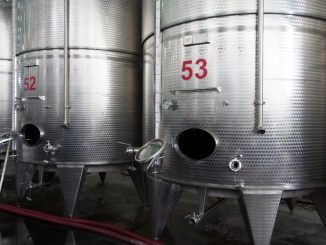
Types of Molasses
Molasses is a thick, dark syrup that is a byproduct of the sugar refining process. It is produced when sugar cane or sugar beets are […]

Molasses is a thick, dark syrup that is a byproduct of the sugar refining process. It is produced when sugar cane or sugar beets are […]

Rhodotorula glutinis is a species of oleaginous yeast that belongs to the Basidiomycota phylum. It is commonly found in various environments, including soil, water, plants, […]

Hydrothermal carbonization (HTC) is a thermochemical process that converts organic biomass, such as agricultural waste, sewage sludge, or woody materials, into a carbon-rich material known […]

Digital twins in biotechnology refer to virtual replicas or models of biological entities, systems, or processes that are created using digital technologies. They are a […]

Rhodococcus is a genus of Gram-positive, non-spore-forming bacteria that belongs to the family Nocardiaceae within the Actinobacteria phylum. These bacteria are characterized by their ability […]

Aspergillus niger is a filamentous fungus belonging to the genus Aspergillus. It is one of the most common and extensively studied species of Aspergillus due […]

Monoclonal antibodies are highly specialised protein molecules that has found wide-ranging application in biotechnology and an analytical biochemistry. Of all the advances that have been […]

Topoisomerases are enzymes that play a crucial role in the maintenance and regulation of DNA structure and topology within cells. They are responsible for altering […]

Candida rugosa is a yeast species belonging to the genus Candida. It is a dimorphic fungus, meaning it can exist in two different forms: yeast […]

Methanobacterium formicicum is a species of microorganism belonging to the domain of the Archaea. It is a methanogenic archaeon, meaning it produces methane as a […]

Haploidy and monoploidy are both terms used in genetics to describe the number of sets of chromosomes in a cell or organism. While they are […]

Plasmids are one of the most important factors in the success of biotechnology. The word plasmid was introduced by Joshua Lederberg in 1952 as the […]

Streptomyces coelicolor is a bacterium belonging to the genus Streptomyces, which is known for its ability to produce a wide range of secondary metabolites, including […]

Cell line development is a process by which the cellular machinery is used to manufacture therapeutic biologics and other proteins of interest. Introduction Tissue from […]

Post-translational modification (PTMs) refers to a host of chemical modifications that occur on proteins after they have been synthesized from the ribosome. These modifications play […]

Mammalian cell expression refers to the process of introducing and expressing foreign genes or proteins in mammalian cells. Mammalian cells, such as human embryonic kidney […]

The manufacture of L-tryptophan, an essential amino acid, using microbial fermentation involves the utilization of microorganisms to produce and accumulate L-tryptophan through metabolic pathways and […]

Microbial fermentation is a metabolic process employed by microorganisms to convert organic compounds into simpler molecules, such as pyruvate. Pyruvate is a key intermediate in […]

When we think about fermentation design we are considering what the properties are that makes for the ideal fermenter. Fermentation is primarily about supporting growth of […]

The unfolded protein response (UPR) is a cellular stress response mechanism that is activated when the endoplasmic reticulum (ER) in a cell is overwhelmed by […]
Copyright © 2025 | WordPress Theme by MH Themes